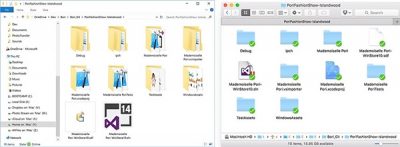If you ever missed those popular IOS apps while using Windows, Microsoft has just made the transition possible. Using Microsoft’s Windows Bridge, iOS developers can now bring existing iOS apps to Windows.
Windows Bridge for iOS
The Windows Bridge for iOS lets developers re-use existing codes making the transition much easier. Bringing iOS apps to the Windows 10 platform also ensures that these apps reaches to various other classes of Windows 10 devices such as smartphones, phablets, tablets, laptops and desktops. Here is a look at how an iOS app is brought to the Windows platform.

iOS app to Windows 10 platform
Created by Dong Yoon Park, Pori Fashion Show is a dress up children’s game for iOS. This game lets you dress up cartoon characters using drag-and-drop mechanics. Once their dolls are dressed up, children can save them as images or walk them down an in-game fashion runway.
Dong Yoon Park, who is also a Senior User Experience Designer at Microsoft, decided to bring this game to Windows platform using the same iOS codes.
First step to migration
With majority of iOS developers working on Macs running OS X, the easiest way to set up your Mac for Windows development is to install Windows 10 and Visual Studio on a virtual machine. Virtual machine allows easy switch between Xcode and Visual Studio to speed up iterations.
Once the development environment is configured, vsimporter tool is used to start the import process. The vsimporter tool enables you to import your Xcode project into a new Visual Studio Universal Windows Platform (UWP) app project with Objective-C support.
Removing Errors
Build Solution can deliver a number of errors at this point, hence iOS-specific frameworks and libraries should be removed before moving to the Storyboard. Storyboard related issues could creep in since Storyboard support in Windows Bridge for iOS is in active development and is not yet complete. Hence Park removed the Storyboard file and moved the layout into the code.
With the shared source code folder, you can run your app in Visual Studio as well as in Xcode to confirm that the code runs well on both Windows and iOS.
Click here to read the Windows blog.
Leave a Reply